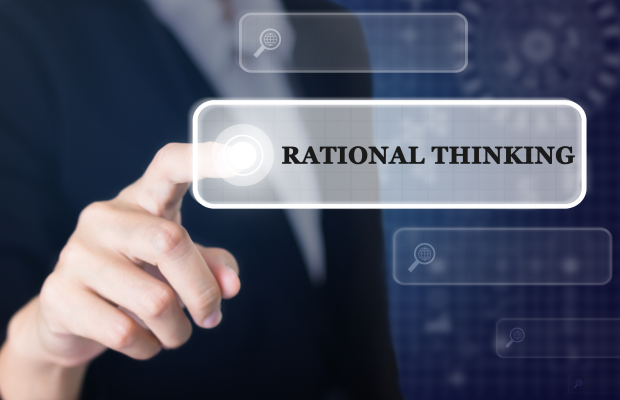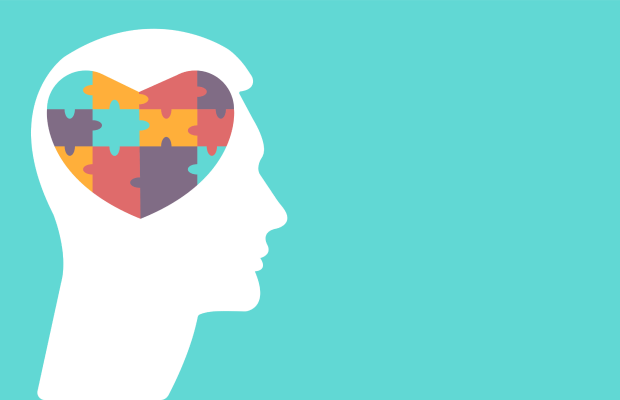“I believe that basic research, directed toward the accepted sciences will keep it [theory] “open” for a long time to come. If it ever makes viable contact with the sciences, it will then be able to share knowledge with the sciences, and contribute to the other sciences, and it will have become a science. To this point, most of the people who have learned the theory and are practicing it still rely on my formulation of the theory as their source of knowledge. If this should continue into the future, then this theory will also have become another closed belief system.” (Bowen, 1978, 407).
Rationale for this presentation
In keeping with Dr. Bowen’s warnings for people to avoid relying on his original theoretical formulation as their primary source of knowledge, this paper is my continued effort to reach outside of Bowen theory literature and make contact with current scientific research on the human. Michael Kerr, M.D. asserts that “at this point in the development of Bowen theory, it is difficult to conduct research projects that meet the standards of science.”. Dr. Kerr points out that “while it is possible to observe functional facts of emotional process and to describe large networks of seemingly linked occurrences, it is hard to put numbers on it or to find ways to prove one’s observations.” (Kerr, M.E., 2019, 178.)
For now, Bowen theorists are challenged to continue to acquire accurate, theoretically consistent knowledge of Bowen theory, test the concepts and principles of theory through observation and clinical application, and make contact with to other scientific disciplines and research. Many scientific disciplines are conducting different types of research that may inform, support, and/or contradict Bowen theory. In this spirit of inquiry, this paper will explore a short survey of other research in two areas:
1) Theories of emotion (Classic and Constructed)
2) Bias
In order to examine this research, a review of relevant terms will be useful:
Epistemology – the study of the nature of knowledge, justification, and the rationality of belief. Epistemology addresses questions: 1) What makes justified beliefs justified? 2) What does it mean to say that we know something? 3) How do we know that we know?
Knowledge – facts, information, and skills acquired through experience or education; the theoretical or practical application of a fact or situation.
Belief – a state of mind in which a person thinks something to be the case regardless of empirical evidence to prove that something is the case.
Conviction – a firmly held belief or opinion; a personal attitude associated with true or false ideas and concepts.
Bias – giving disproportionate weight in favor for or against one thing, person, or group compared with another; one-sided, lacking a neutral viewpoint, or not having an open mind; can come in many forms; can be related to prejudice and intuition.
Cognitive bias – learned within cultural contexts against an individual, an ethnic group, a sexual or gender identity, a nation, a religion, a social class, a political party, and theoretical paradigms within academic domains. People create their own subjective social reality from their own perceptions, which dictates their behavior. Negative result – leads to perceptual distortion, inaccurate judgement, and irrationality. Positive result – can be adaptive, and lead to success in an appropriate situation; allows for speedier choices when speed is more important than precision.
Anchoring – a propensity to rely on the first piece of information encountered when making decisions. Begins with an implicitly suggested reference point (the anchor) and then makes adjustments to it to reach an assessment.
Apophenia – the human tendency to mistakenly perceive meaningful patterns within random data (Patternicity). Adaptive by helping to organize chaos and make the world intelligible.
Attribution bias (Fundamental Attribution Error) – when individuals assess or attempt to discover explanations behind their own and others’ behaviors. Don’t necessarily precisely reflect reality. Promotes perceptual slips that prompt biased understanding of the world. Usually assume that others’ actions are exclusively attributed to the person’s internal character/dispositions (personality) and ignore situational determinants (context). In contrast, we tend to attribute our own actions a result of external circumstances and situational determinants (context).
Confirmation bias – the tendency to search for, interpret, favor, and recall information in a way that confirms one’s beliefs or hypotheses and giving less attention to information that contradicts it. The effect is stronger for emotionally charged issues and for deeply entrenched beliefs.
(Naïve Realism) – the idea that the senses provide us with direct awareness of the world as it really is; the conviction that one sees and responds to the world objectively or “as it is.” Can lead to the conviction that others in general are more vulnerable to biasing influences than we are ourselves.
Indirect Realism – describes how others see the world and respond to it differently because our conscious experience is only an internal representation of the world. The claim is that our reality is indirect (e.g. The experience of a sunset is subjective copy of what really is radiation, as described by physics). “Objectivity is in the eye of the beholder.”
Affective realism – a powerful form of naïve realism when paired with emotional intensity; the tendency of feelings to influence what is actually visualized – not what you think you see, but the actual content of your perceptual experience. The brain is a predictive organ. A majority of brain activity consists of predictions about the world – thousands of them at a time, based on past experiences; unconscious anticipations of every sight, sound and other sensations encountered in every instant. (Barrett, Lisa Feldman & Wormwood, Jolie, 2015.)
Brief Survey of Three Theories of Emotion
Theory of Constructed Emotion (Lindquist, K.A.,Wager, T.D., Kober, H., Bliss-Moreau, E., & Barrett, L.F. (2012). The brain basis of emotion: A meta-analytic review,” Behavioral and Brain Sciences, 35, 121-143) – this research suggests that at a given moment, the brain predicts and categorizes the present moment via interoceptive predictions (information about the state of the body) which produce basic, affective feelings of pleasure, displeasure, arousal, and calmness, simultaneously linking emotional concepts we have learned from culture, to construct an emotion. Emotional concepts are embodied knowledge acquired from early nurturing and culture. Social reality provides the collective agreement and language that make the perception of emotion possible among people who share a culture. The organism receives messages from the body and uses past experiences to make predictions. These predictions generate emotional responses. This process takes place before a sensory input becomes conscious. According to Barrett, et.al., emotion is never absent; emotion is involved in movement, action and decision. There is no separation between thinking and feeling. Thinking and feeling are not separate networks but rather dynamic “whole brain states,” always in motion, making predictions. Barrett’s empirical evidence suggests that affect exists in the brain and the body, and that emotions are constructed by multiple brain networks working in tandem. Basic emotions are not biologically hardwired. Instead, emotions are phenomena that emerge in consciousness in the moment. Emotions are constructed.
Classic Theories of Emotion – suggest that basic emotions arise from separate, distinct, and independent systems in the brain. Thinking and feeling functions are separate. Basic emotions are genetically hard-wired through evolution and produced by dedicated circuits (regions) in the brain (e.g., Amygdala is seen as the seat of fear in the brain and supports the emotion of fear). Likewise, emotions of anger, joy, disgust, surprise, trust, etc. are basic emotions biologically hard-wired in the brain. (e.g., Charles Darwin, Jaak Panksepp, Steven Pinker).
Bowen Theory– based on basic fundamental assumptions:
- Objective reality exists that can be studied and revealed.
- Facts are real and observable.
- Science represents the best approach to knowledge about the human.
- Evolution and biology are central foundations for the science of the human.
Research underpinnings of Bowen theory:
NIMH Family Study Project provided Dr. Bowen and his research staff long-term direct observation of in-patient family interactions; data was not limited to self-report. (Bowen & Butler, 2013). Murray Bowen’s direct observation and clinical work with individuals, couples and families over four decades formed the basis for concluding that the human family is a naturally occurring system and interactions of family m embers add up to a whole that is greater than its parts (Kerr, M.E., 2019, Introduction, p. xiv).
Bowen recognized that evolution equipped the human with an automatic guidance system (emotional system), along with the capacity to objectively observe themselves and others, to reflect, and to abstract.
Bowen postulated that there is a dividing line between emotion and intellect, that the human has more or less ability to observe the emotional process with his own intellect, and that evolution has endowed humans with the potential to define and select more options for their behavior than any other species.
Bowen theory is based on observational clinical research and reasoning.
Challenges to Bowen Theory
Today, heeding Dr. Bowen’s warning to extend and refine Bowen theory in order prevent Bowen theory from becoming a closed belief system, students of the theory are making contact with the research of other scientific disciplines in the fields of evolution, biology, physiology, evolutionary psychology, social psychology and neuroscience. Current research on the human appears to challenge some of Bowen’s original inferences and to validate others:
Non-conscious “constructed emotion” (Barrett, L.F., et.al., 2017) challenges Bowen’s assumptions by positing that thinking and feeling are not separate networks but rather dynamic “whole brain states,” constantly making predictions that generate an emotional response. According to Barrett, et.al, emotions are phenomena that emerge in consciousness in the moment with the input of the brain and the body; multiple networks working in tandem. There is no thinking without emotion. Is there a way for Bowen theory, informed by the underpinnings of the classic views of emotion (the separation of emotional brain function and the cognitive brain function hard-wired in the brain), to integrate the constructed theory of emotion? How much does the level of differentiation and chronic anxiety, as understood in Bowen theory, impact the human’s ability to efficiently shift brain states and contribute to increased prediction errors?
Libet, B., et al, (1983) looked at the interplay of non-conscious initiation of action before the conscious awareness of a decision to act; the role of unconscious cerebral initiative and the role of conscious will in voluntary action. This research found that firing of electrical potentials in the brain happens seconds before a decision to act is made. Libet’s research challenges the concept of “free will.” According to the research, conscious awareness of voluntary action follows the non-conscious (automatic) initiative to act. This research may shed some light on Bowen theory’s concept of differentiation of self which requires the conscious awareness of distinguishing and separating feeling and thinking, followed by choosing to take deliberate action.
Libet’s research points to the serious challenge a person encounters with Bowen theory; the challenge to make the “automatic” more conscious in order to further the goal of increased self-regulation and an increased level of differentiation of self? Libet’s later research (2004) allowed room for volitional process. He observed that the conscious will does appear 150 msec before the motor act, even though it follows the onset of cerebral action by at least 400 msec. He found that the conscious will could decide to allow the volitional process to go to completion, resulting in the motor act itself (i.e., flexing a finger). Or, the conscious will could block or veto the process, so that no motor act occurs. The possibility of over-riding of the automatic through conscious will begs the question. Just how much practice does it take to make the non-conscious more conscious?
Kahneman’s “fast” and “slow” thinking (Kahneman & Tversky, 2011). In his research, Kahneman, et.al. identified a dichotomy between two modes of thought: System 1 is fast, instinctive and emotional; System 2 is slower, more deliberative, and more logical. He observed how the two thought systems can arrive at different results even given the same inputs. The System 1 vs System 2 debate is one explanation for the reasoning or lack of reasoning in human decision making. This research points to the challenge that Bowen theory poses when people try to work on increased self-regulation and differentiation of self. Are fast and slow thinking variables that add to the difficulty of separating thinking and feeling functions and trying to increase one’s level of differentiation? Is the fast and slow thinking process implicated in understanding the variability in the human’s ability to make decisions driven by automatic subjectivity or reason?
Bias in science (cognitive bias, attribution bias, confirmation bias, naïve realism, and affective realism). Bias leads to systematic errors in design, conduct or analysis. Bias produces perceptual errors, clouds rational thinking, and produces inaccurate interpretations. Lack of awareness of the research on bias leads to imprecise science. How does the pitfall of bias inform one’s hypotheses, observations and outcomes in Bowen theory?
Summary
Greater knowledge has led to more questions and more debate. I have spent the last 25 years working with Bowen theory in my personal life and working clinically with individuals, couples and families through the lens of Bowen theory. The application of Bowen theory to my life and clinical work required a shift in my thinking and behavior:
Systems thinking – shifting from a focus on the individual to a focus on the individual in the context of the family unit or system.
Emotional objectivity and neutrality – working toward getting beyond blame and seeing the reciprocity in interactional processes; managing my own emotional response to the interactional patterns rooted in my own life experiences.
Research attitude – gathering facts; asking who, what, when, where, and when; developing a hypothesis about the nature of a problem; developing an experimental approach. The research attitude requires me to become an observer of emotional process and to think about the problem rather than react to the problem.
Measuring progress – through improvement in self-regulation, increasing tolerance for anxiety, and shifting my part in the reactive interactional sequences of emotional process.
At this point, based on my personal effort with the application of Bowen theory in my extended and nuclear family and working clinically through the lens of Bowen theory, I have demonstrated to myself and am satisfied that the interplay of chronic anxiety and differentiation of self, as well as other Bowen theory concepts and principles, adequately explain the variability of functioning in myself and others. Bowen theory continues to provide a useful road map for increasing the functioning of self and others over time.
However, I have a responsibility to question my own knowledge of theory (conviction and belief vs science). Different forms of bias can lead to a lack of neutrality and a closed mind. Bias in all theoretical perspectives, including Bowen theory, make one vulnerable to dismissing different perspectives, asserting theoretical formulations as fact, asserting analogy as homology, and dismissing the scientific method and statistical research. The pitfalls of bias can lead to a closed system characterized by dogmatism, polarization and cut-off.
Dr. Bowen posed the question to his trainees, “How do you know you are wrong when you are convinced you are right?” This question is still relevant today. Based on an emerging body of scientific research on the human, the challenge is to prevent erosion of theory while keeping Bowen theory an open system; to be scientifically proved or disproved.
Acknowledging the pitfalls of bias, continuing to question, and staying open to relevant emerging scientific knowledge will support the development and extension of Bowen theory into the future.
References
Barrett, Lisa Feldman & Wormwood, Jolie, “When a Gun is Not a Gun,” New York Times, Opinion, April 17, 2015.
Barrett, L. F., et.al., Social Cognitive and Affective Neuroscience, Volume 12, Issue 1, January 2017, 1-23
Bowen, Family Therapy in Clinical Practice, 1978, 407, Jason Aronson.
Bowen, M., & Butler, J. (Ed.). (2013). The origins of family psychotherapy: The NIMH Family Study Project, (M. Kerr & J. Bowen, Contributors), Jason Aronson.
Kerr, M.E., Bowen theory’s secrets: Revealing the hidden life of families. New York: Norton 2019, 178.
Kahneman D., Lovallo,D. & Sibony, O. (2011) Before You Make That Big Decision….Harvard Business Review, 89(6), 50-60.
Libet, B., et al, Time of Conscious Intention to Act in Relation to Onset of Cerebral Activity, Brain, 1983, Sep. 623-642.) Press
Lindquist, K.A.,Wager, T.D., Kober, H., Bliss-Moreau, E., & Barrett, L.F. (2012). The brain basis of emotion: A meta-analytic review,” Behavioral and Brain Sciences, 35, 121-143)




